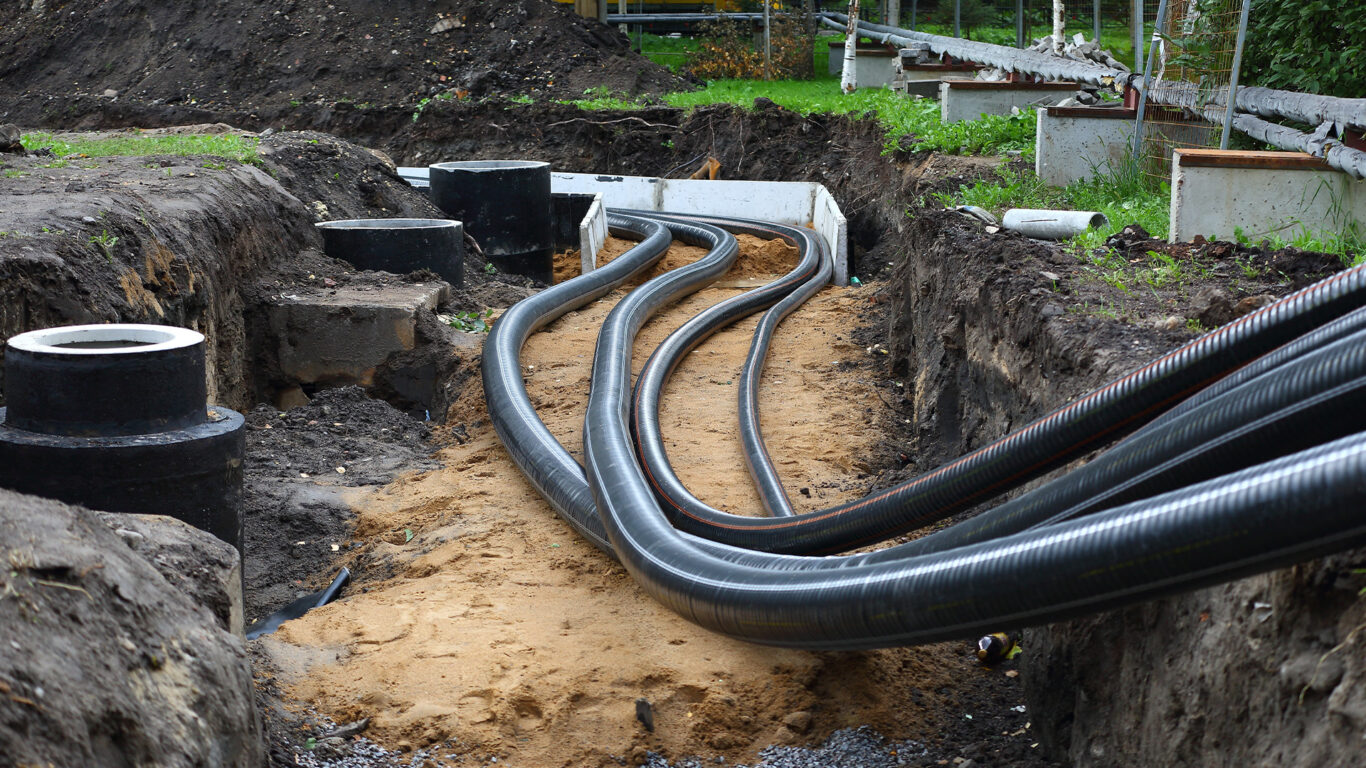The increase in revenue coming from the federal government is an excellent opportunity for municipalities to make a lasting impact on their communities. Investing the grant money into building quality infrastructure can ensure that communities receive steady, reliable resources for years to come. Public utility depends on the maintenance of their infrastructure and the financial security to pay for it. The specific grant funding that’s coming into the hands of local governments now intends to help communities recover and remain healthy. Preparing for this grant funding by establishing a sound financial plan is critical in achieving this goal.
Two federal laws enacted in 2021 provide funding for state and local infrastructure investments. The American Rescue Plan Act (ARPA), signed into law on March 11, 2021, is the federal government’s effort to boost the U.S. economy after the challenging effects of the COVID 19 pandemic. The Infrastructure Investment and Jobs Act (IIJA), signed into law on Nov. 15, 2021, provides $1.2 trillion in federal funding for a wide range of infrastructure projects.
The Rescue Plan monies accord substantial discretion to state and local governments when deciding which infrastructure projects to support. Projects must fit into one of four categories:
- The money is spent funding coronavirus relief
- The money is spent increasing the wage of essential workers
- The money is used as revenue in response to a decrease in public spending
- The money is invested in infrastructure such as sewer, water and broadband

The rescue plan does not guarantee every requestor the funding to support utility needs. If the community is in need of aid in these areas, make those needs known to city officials as soon as possible. Because of ARPA’s “final rule” most cities are required to develop an asset management program for their water and wastewater systems. This means many communities already have lists of eligible projects for the ARPA program. Utilities considering advanced metering infrastructure may also be able to use Rescue Plan funds.
The Infrastructure Investment and Jobs Act provides another opportunity to make transformative infrastructure improvements. The IIJA is a $1.2 trillion dollar infrastructure package addressing many types of infrastructure. In contrast to ARPA, the Infrastructure Investment and Jobs Act (IIJA) is not an automatic distribution. Funds for this program are released based upon application.
The Infrastructure Investment and Jobs Act includes allocation of $65 billion for broadband, with the goal of bringing high-speed connectivity to underserved regions of the country. The law also allocates $7.5 billion to build and operate publicly accessible electric vehicle charging infrastructure and $65 billion to supplement existing power structure work and innovative approaches to grid resiliency and energy improvements. Additionally, the federal government is distributing $55 billion alone to water infrastructure. This will include:
- Lead pipe replacement
- Chemical clean-up
- Money to provide clean drinking water to members of tribal communities
The Environmental Protection Agency (EPA) will be distributing these funds to states per the results of the infrastructure needs assessment survey. The EPA is giving money to State Revolving Fund (SRF) agencies, which is where utility companies should make their needs known. Connect with these agencies as soon as possible to express interest in the program and ask what your next steps should be.

Some of the funds will come with no match or cost-share requirements and some will be loans with principal forgiveness or grants. If your utility receives funds under these provisions, be sure the grant funds used for capital investment are properly recorded as contributed capital. Your auditor can help guide you in this area.
The influx of potential funding makes now an important time to set appropriate revenue requirements and review key financial targets to establish a long-term forecast. Many utilities may need rate increases and bonding beyond federal funding to meet operating and capital needs. Such planning may be difficult for some utilities as it will involve a change in practices. Too many governing boards and councils have avoided rate increases, even during strong economic periods. These utilities often operate at a loss, spend down cash, forego capital investments, and remain unprepared for strategic investments in infrastructure.
Strong financial planning is essential to keeping your utility reliable. Furthermore, when opportunities such as grant funding are at play, creating a sustainable financial plan is a way to make this money more meaningful for the community. This funding is an opportunity to change the way we think about financial planning for the better.

Utilities should set their sights on at least three key financial targets and develop a plan to achieve them.
- Sufficient Debt Coverage Ratio: Debt coverage ratio is a measurement of debt affordability. The general guideline is to generate sufficient cash flow from operations in each fiscal year to cover the utility’s debt payments 1.25 times. Utilities with insufficient mandated debt coverage can technically be in default and considered higher risk, facing higher interest rates for future bonds.
- Minimum Cash Reserve Policy: Minimum cash reserves identify the minimum amount of cash a utility should hold. Policies that define a minimum cash reserve make for healthier utilities when established and followed. A cash reserve policy does not reference a specific dollar amount, but follows a defendable methodology to give future decision makers guidance and accountability.
- Positive Operating Income: Operating income is a measurement of revenues less expenses in each fiscal year. If a utility has a negative operating income, current rate payers are not paying their fair share and future rate increases will need to be much higher to recoup the deficiencies.
The plan incorporating these targets should include small, incremental rate adjustments. Small adjustments have a powerful compounding effect on utility revenue recovery and allow customers to prepare for rate changes and avoid rate shock. There are two keys to maintaining utility financial health in a more palatable way for customers of all income levels. Utilities need to advertise the rate increases well in advance and implement the changes on schedule. Tried and true financial planning principles are the best strategy for long-term financial sustainability. The forthcoming federal funds give utilities a unique opportunity to boost their current financial position and help create a pathway to a transformative future.


